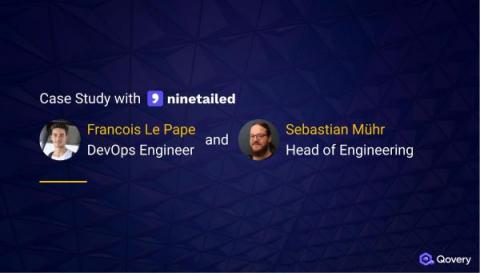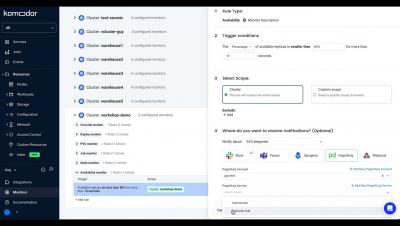Operations | Monitoring | ITSM | DevOps | Cloud
Containers
The latest News and Information on Containers, Kubernetes, Docker and related technologies.
Ask What Air-Gapping Can Do for You
In our recent webinar on air-gapped security, D2iQ VP of Product Dan Ciruli shared a new way of thinking about air-gapping, explaining how air-gapping could be applied in places that are not usually considered candidates for air-gapping. In an exchange of insights with Paul Nashawaty, principal analyst at Enterprise Strategy Group, Ciruli explained how the need for air-gapped security has become more critical as more organizations move to the cloud.
Understanding Kubernetes Logs and Using Them to Improve Cluster Resilience
In the complex world of Kubernetes, logs serve as the backbone of effective monitoring, debugging, and issue diagnosis. They provide indispensable insights into the behavior and performance of individual components within a Kubernetes cluster, such as containers, nodes, and services.
Kubernetes Architecture Part 2: Control Plane Components
This Kubernetes Architecture series covers the main components used in Kubernetes and provides an introduction to Kubernetes architecture. After reading these blogs, you’ll have a much deeper understanding of the main reasons for choosing Kubernetes as well as the main components that are involved when you start running applications on Kubernetes. This blog series covers the following topics.
Rancher Desktop: The Ultimate Local Kubernetes Solution for Developers
Kubernetes has created a major impact on modern software development because it is a powerful open source container orchestration platform that enables organizations to deploy and manage complex containerized applications at scale. In this blog, we will cover how Rancher Desktop can help developers run and manage Kubernetes locally.
Seamless Transition to Kubernetes: Ninetailed's Path to Production with Qovery
Escape the Legacy Trap: 5 Keys to Successful Application Modernization
Michael Coté and Marc Zottner co-wrote this article. Legacy software can slow—or even stop—business growth. As organizations hit a legacy wall, they face an unfortunate reality: When IT systems are too old and unchangeable, it’s impossible to transform the way their core business works. In fact, 76 percent of executives say that legacy software is holding them back, according to a Forrester report commissioned by VMware. What does that mean for today’s businesses?
The Care and Feeding of Internal Developer Platforms
If you’ve ever attempted to cultivate a backyard vegetable garden, flower garden for your balcony, hydroponic tower, or other system to grow plants, you’ll understand that it’s not a matter of tossing down some seeds in soil and letting nature take its course. Without proper monitoring and management, ecosystems may grow out of control, or simply wither and die off.
Ensure Kubernetes Compliance with New Private Registry Support for VMware Tanzu Mission Control
Corey Dinkens, Sneha Narang, and Lauren Britton contributed to this blog post. VMware Tanzu Mission Control is a centralized hub for simplified, multi-cloud, multi-cluster Kubernetes management. It helps platform teams take control of their Kubernetes clusters with visibility across cloud, on-premises, and edge environments by allowing users to group clusters and perform operations on these groupings.











